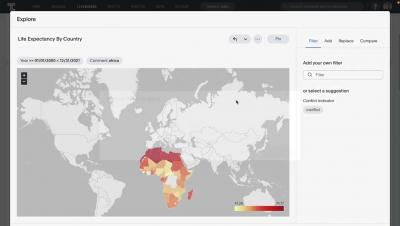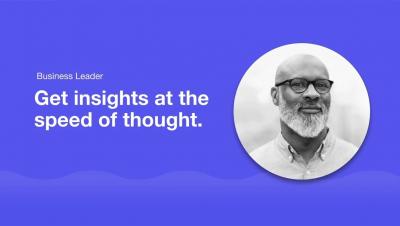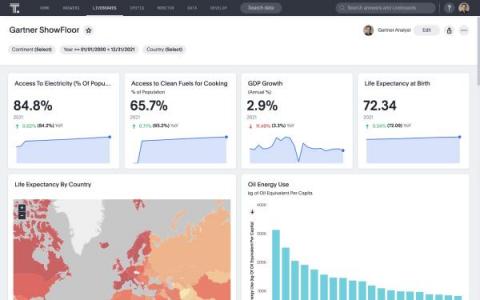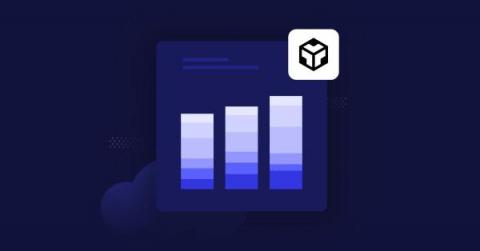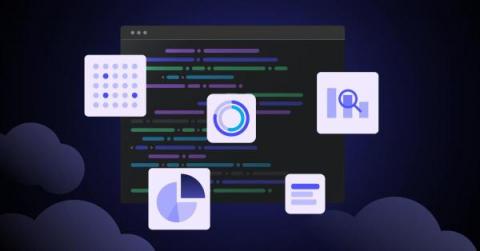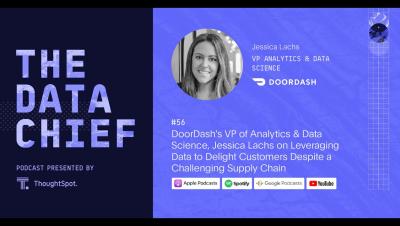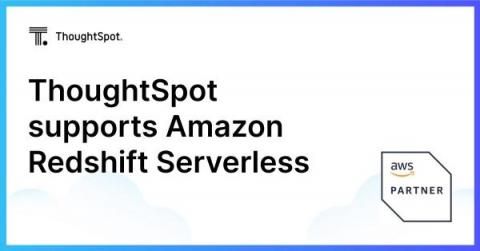Systems | Development | Analytics | API | Testing
August 2022
Using Keywords
Creating Liveboards
Customizing Charts and Visualizations
Sharing Answers and Liveboards
Introduction to Formulas
Going beyond dashboards at Gartner Data & Analytics Summit
What's new in ThoughtSpot Analytics Cloud 8.6.0
Kyocera is an industry leader with ThoughtSpot data-driven insights
Going beyond dashboards at Gartner Data & Analytics Summit
Well, that was interesting! I just finished the Show Floor Showdown for Business Intelligence at Gartner Data & Analytics Summit with team ThoughtSpot. (Reminder: ThoughtSpot was named a Visionary in Gartner’s 2022 Magic Quadrant™ for Analytics and BI Platforms.) For the setup, we were asked to play the roles of sustainability experts, government officials, and business leaders working to understand the impact of sustainability goals on economic, environmental, and social outcomes.
Using CodeSandbox for ThoughtSpot Everywhere development
Over the past week or so, I’ve been working on updating our Developer Workshop content. One of the trickiest parts of running workshops is the differences in local environment configuration: some attendees have a Mac, others windows, some with admin permissions, and some without. So much depends on what your company provides and how they manage their systems. To make things easier, I’ve been relying on CodeSandbox to eliminate a lot of the unknown.
Modern Milkman makes sustainability accessible to every consumer with ThoughtSpot
Using Webhooks and ThoughtSpot Custom Actions
One of the most significant benefits of the modern data stack is the loosely coupled nature of each layer to help you adapt to change and capitalize on new business opportunities. You can choose the best solution which fits your need without long-term vendor commitments, and the risk of introducing complex integrations and IT management. One of the ways to achieve this loose coupling is through webhooks.
Data Modeling in the Modern Data Stack
DoorDash's VP of Analytics & Data Science, Jessica Lachs on Leveraging Data to Delight Customers
How to Connect ThoughtSpot to Amazon Redshift Serverless
Many businesses rely on Amazon Redshift Serverless for their cloud data warehouse and ThoughtSpot to derive insights from the data stored within. For this blog, I’m going to show you how to create a connection between Amazon Redshift Serverless and ThoughtSpot. It’s easy to connect Redshift with ThoughtSpot whether you have it running as a cluster which you have provisioned, or serverless.
5 analytics engineering tools every engineer needs to know
Are you considering venturing into the world of analytics engineering? Analytics engineers are the newest addition to data teams and sit somewhere between data engineers and data analysts. They are technical, business savvy, and love to learn. A huge part of an analytics engineer’s role is learning new modern data tools to implement within data stacks.
Optimize your cloud data cost: 4 steps to reduce cloud data platform cost before they control you
If you have managed a cloud data platform, you have undoubtedly gotten that call. You know the one, it's usually from finance or the office of the CFO, inquiring about your monthly spend. And it usually comes in one of two forms: While both are clear and present dangers to cloud data platform owners, they don’t have to be.








